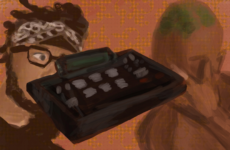Among the seemingly endless factors that contribute to the chaos of modern politics, the practice of gerrymandering has gone relatively unnoticed compared to other issues. This manipulation and redrawing of district borders to favor one political party over another has plagued American politics since the founding of the country, with the first recorded instance of district redrawing occurring in 1788 and the coining of the term “gerrymandering” in 1812.
Gerrymandering diminishes the voices of the American people, which is a direct violation of the democratic principles on which the U.S. was founded. When district maps are redrawn to favor one party over another, those constituents that support the other party lose their voices. A democratic process cannot and should not involve picking and choosing whose voices matter over others. The sole purpose of gerrymandering is to let one party maintain control. When politicians do this, they are telling their constituents that the interests of politicians matter more than the needs and wants of the people.
In addition to gerrymandering being an anti-democratic process, the practice itself is based on bias. It is a common practice for both Republicans and Democrats alike to gerrymander a state or district. Someone who is redrawing district lines can create bizarrely shaped districts in order to place the majority of a certain group into one district. In fact, the word gerrymander is a portmanteau of Governor Elbridge Gerry of Massachusetts’s name and “salamander,” which supposedly resembled the shape of the district he created in 1812 to favor his party. This disenfranchises that district’s designated group because their opinions only represent one district, instead of the multiple different neighborhoods in which they live. This can go the other way as well. If a party knows that a majority of their voting demographic is made up of a certain group, they can redistrict a state to ensure that each district has a majority of that group.
When it comes to gerrymandering, it is easy to point fingers and demand that the other party stop. However, gerrymandering has been used by practically every party since the ratification of the Constitution. Therefore, nothing will be solved by continuing to blame one party or the other. The only way to move forward is to acknowledge that all parties have tried to use gerrymandering to further their own agenda. So how do we fix it?
The first step would be to enact legislation that would outlaw the unfair redrawing of district maps in the form of a constitutional amendment. However, such legislation would still leave the problem of providing a fair drawing of district lines that does not favor one party over the other and ensures that those who live within the districts are able to have their voices heard. One promising solution is to take redistricting out of the hands of humans completely. There are many computer programs and algorithms that take into account factors such as travel time and population density to produce a more equitable division of districts.
If a party wants to win, they should have to listen to the needs of the people instead of relying on the redrawing of a map.




